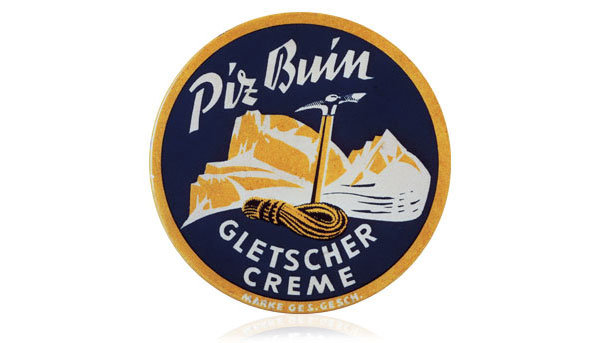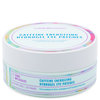The Past, Present, and Future of Sun Protection Products
Published Jul 22, 2014

We’ve come a long way from the bare-bottomed Coppertone Girl. Today, we have a wealth of sun protection options at our disposal—from sprays to pills and even SPF-infused clothes. But with all the choices, there’s really only one thing to remember: harmful UV rays can cause skin cancer and premature aging. And that means SPF products should be a non-negotiable part of your everyday beauty routine.
Because, as they say, education is the best prevention, we decided to take a look at the past, present, and future of UV protection products. After reading this, not only will you be a more informed consumer, you’ll sound really smart while you lounge by the pool all summer.
The earliest sunscreens
One of the first well-documented sunscreens was invented in 1938 by the chemist Franz Greiter. The formula, which would be today’s SPF equivalent of 2, was picked up by a company called Piz Buin—named after the mountain in the Swiss Alps where Greiter experienced his first sunburn and subsequently had his lightbulb moment.

The next popular version came at the height of World War II, around 1944, when Benjamin Green, a Florida pharmacist and former airman, developed a sunburn-prevention lotion for soldiers in the Pacific. Green’s first iteration was a red, sticky solvent made of veterinarian petrolatum, a substance similar to petroleum jelly, and aptly deemed “Red Vet Pet.” The color rendered it not-so-user-friendly—it stained clothing, not to mention the skin. A few years later, Green introduced a new version that incorporated cocoa butter and coconut oil into the mix, and the resulting concoction was effective enough for Coppertone to purchase the patent and introduce the first mass-marketed sunscreen lotion to the world in the '50s. Further work on the Coppertone formula provided that white, rub-in, lightly scented formula we all know so well. Today’s swim- and sweat-proof products are much more advanced and durable, but evolved from these early prototypes.
More SPF power
SPF, or sun protection factor, was a term coined in the ’60s—by Greiter—as a standard of measuring a product’s effectiveness in blocking UV rays. This is how the Skin Cancer Foundation currently defines SPF: “SPF is the comparative ratio between the minimal erythemal dose (MED)—the time it takes for reddening or sunburn to start—in skin protected with sunscreen and the MED in unprotected skin. For example, if it takes 20 minutes without protection to produce erythema, an SPF 15 sunscreen might prevent reddening 15 times longer—about five hours.”
While it was once thought that SPF ratings of 15 were strong enough, further research by associations like the American Cancer Society deemed the need for more protection, and over time they increased to SPF 30. Today you can find SPFs of 50 and even higher, but the general rule of thumb is: if you’re going to be in the sun for a significant amount of time, aim for a higher number and always reapply every two hours.
Fancy formulas
Over the decades, manufacturers have continuously gotten more and more creative with sunscreen products. After conventional lotion formulas, which absorb into the skin, came Coppertone’s infamous “Noskote” in 1955. The product—an opaque white zinc oxide—was first popularized by lifeguards and surfers in the ’80s. When, in 1986, the California company Zinka started making its own “Nosecoat” in shades of hot pink, yellow, teal, and everything in between, it really took off. Today, Zinka sells Nosecoat in 12 shades, along with other protective products.

Shelves are crowded with tons of other options these days, too: colorful sunblocks designed for kids (they go on colored, and fade when it’s time to re-apply); easy spray-on formulas; and solid balm sticks for swipe-on protection. Of course, none of these should be confused with tanning oils, those products many sunbathers use to enhance their bronze glow that do not contain any form of SPF. (Steer clear of those, guys!)
More than skin-deep
And sun protection isn’t just about body lotions and face creams anymore. While standard sunglasses have long come standard with UV blocking agents, clothing and hair brands have caught on, too. Many athletic brands sell clothes that carry a UPF (ultraviolet protection factor) rating—the fabrics combine different dyes and fibers that block transmission of harmful rays to your skin more effectively than normal clothing. You’ll find UPF clothing rated from 15 to 50+ (15 = good, 50+ = excellent). You can find everything from swimsuits and wetsuits to T-shirts and hats infused with UPF.
And speaking of head protection, hair companies including Kerastase, Redken, and Aveda have developed a number of shampoos, conditioners and oils that are formulated with SPF to protect the head and scalp. Bonus: the products can help keep hair color intact, protecting against that unintentional fading that sometimes happens from too much sun.
The future of protection
As for the newest developments in the field, sunscreen pills have been marketed to the public recently; many professionals caution against relying on them as your sole source of protection. And this year, drinkable SPF has become a hot topic, too. Osmosis Skincare’s UV Neutralizer Harmonized Water—if you drink it one hour before you head outdoors, it’s supposed to give you SPF 30 protection. According to the company, the nontoxic formula consists of distilled water “imprinted with unique, vibrational messages which isolate out the precise frequencies needed to protect you from UV rays,” not unlike noise-reducing headphones. While we give the experts a little more lab time to research these new ingestible forms, we suggest going back to the basics. After all the original Coppertone Girl, Cheri Irwin, is still enjoying her days in the sun.
You Might Also Like
-

Beautylish Recommends
Does Mineral Sunscreen Protect Skin Better Than Chemical Formulas?
-

Hand Treatments
7 Hydrating Creams for Extremely Dry Hands
- 55
-

Skincare
Say Goodbye to Ingrown Hairs!
- 1060
-

Sun Protection
3 Things to Know When Buying SPF This Summer
- 220
-

Skincare
Best Botox-Free Alternatives
- 135
-

Fragrances
5 Vanilla-Scented Beauty Products That Are Anything But Basic
-

Face Serum
Remove Those Dark Spots
- 192
-

Masks
Which Face Mask is Right For You?
- 3038












